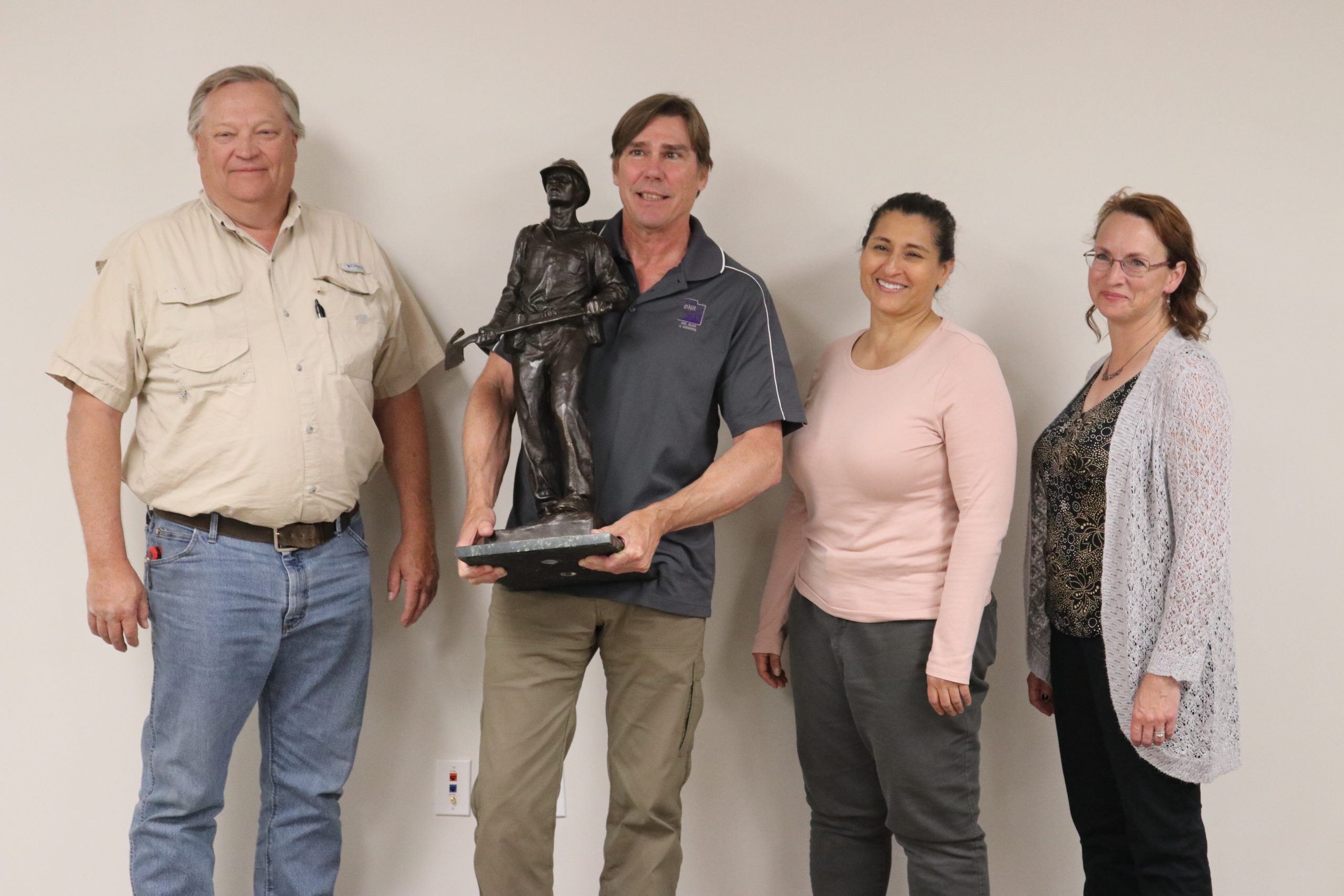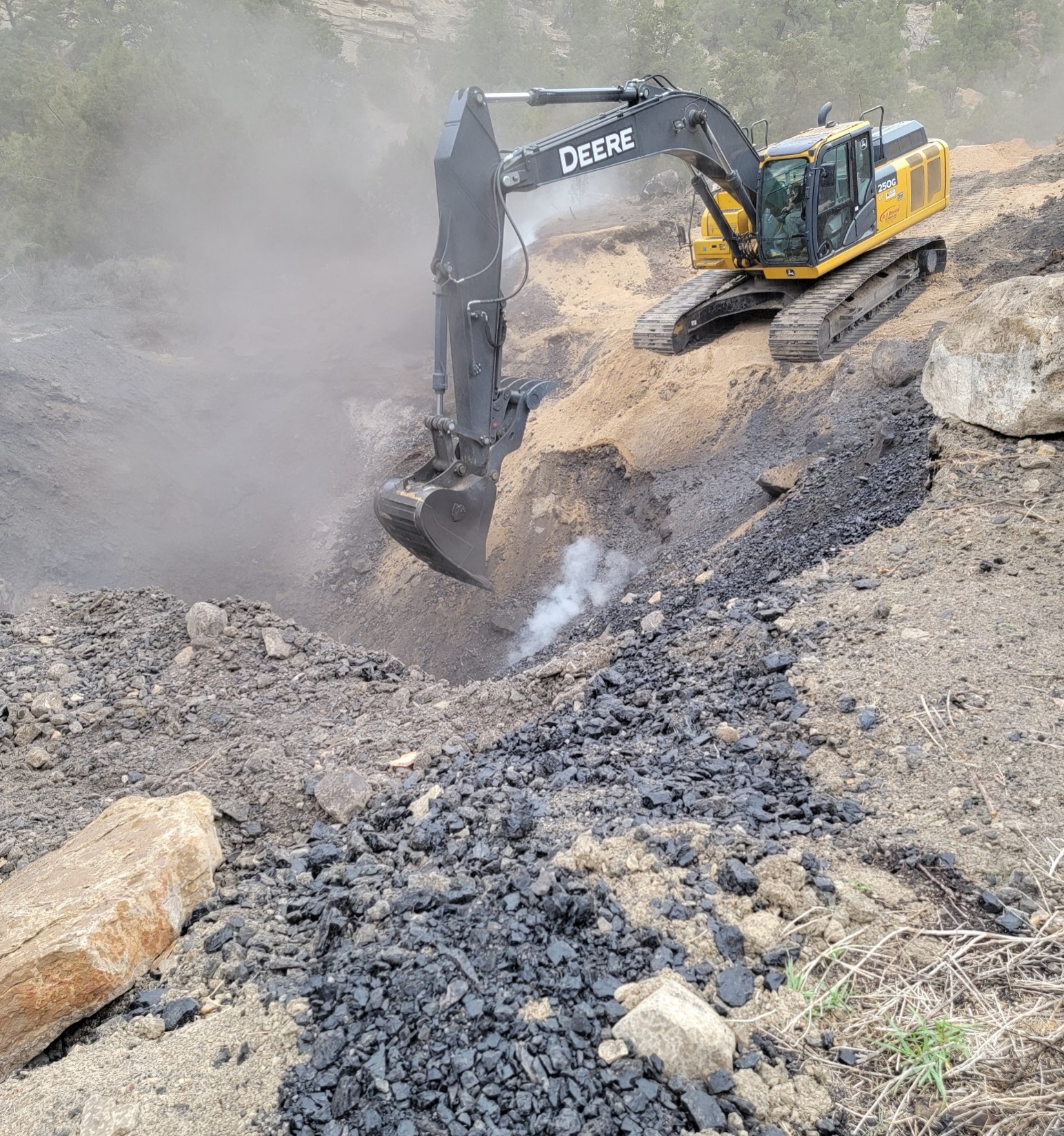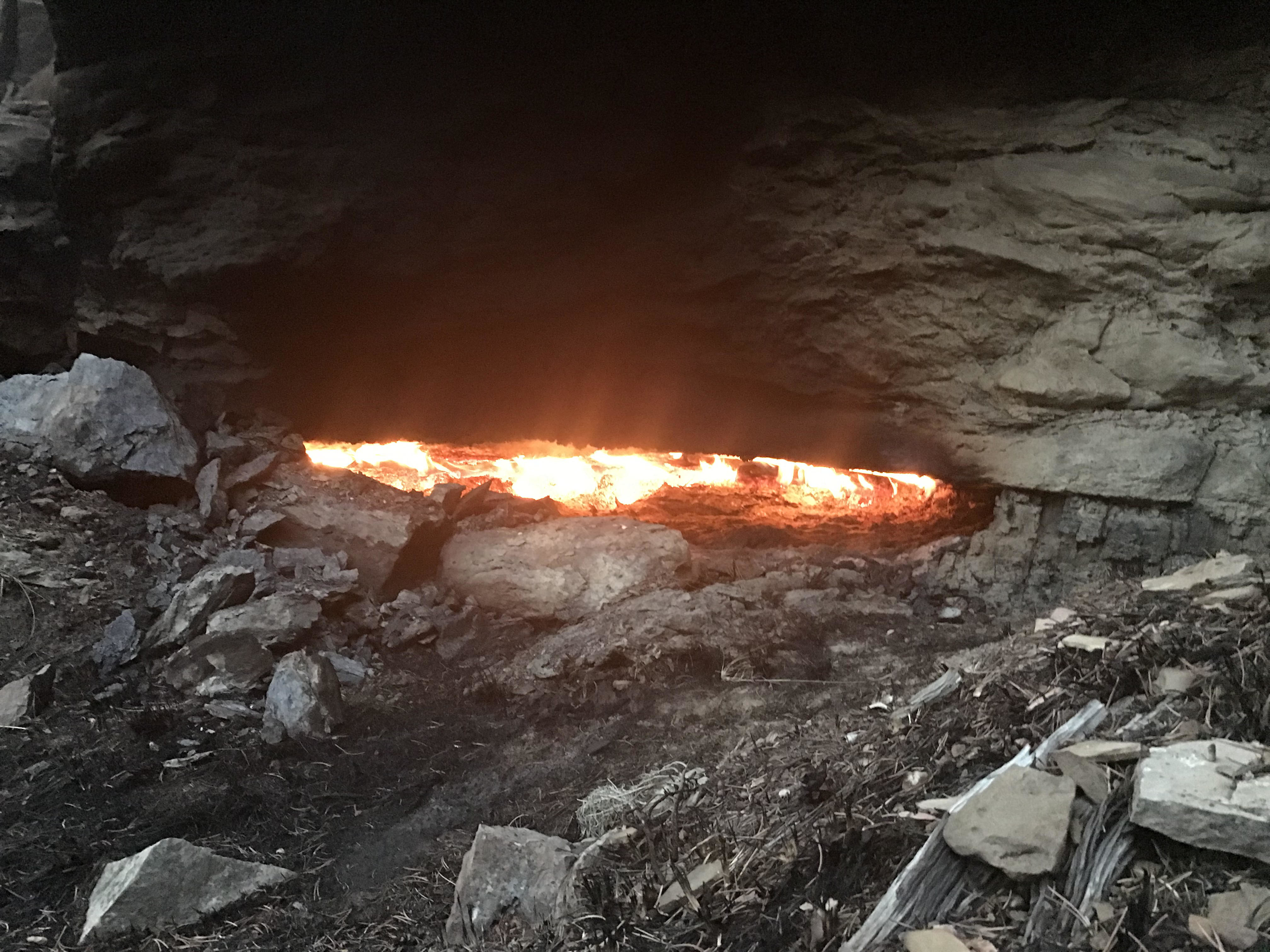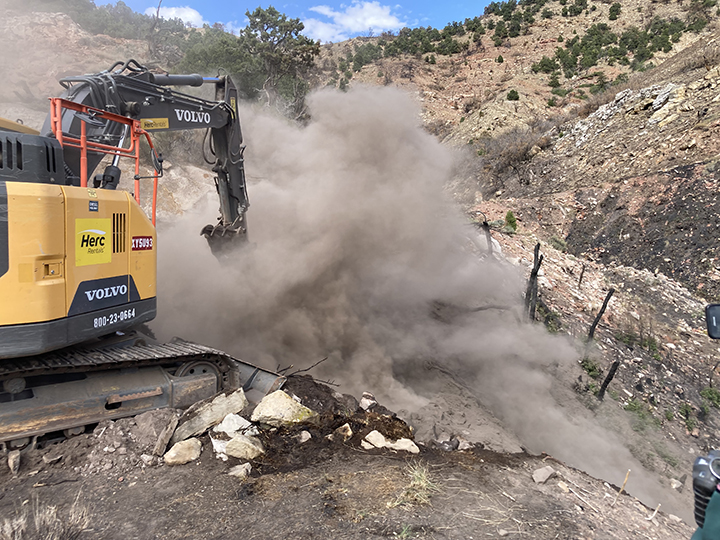The Division of Oil, Gas and Mining is one of nine joint winners of the 2022 Bureau of Land Management’s (BLM) Pulaski Award, recognizing outstanding interagency efforts to successfully manage the Bear and Bennion wildfires of June 2021. Partners include BLM-Green River District (Price Field Office), Manti-La Sal National Forest, Utah Division of Forestry, Fire and State Lands (Southeast Area), Moab Interagency Fire Center, Utah Department of Transportation, Price City, Helper City, and Carbon County.

Peerless Coal Fires Project
The Bear wildfire burned over 12,000 acres in the Wasatch Plateau and ignited multiple coal fires near Helper, in Hardscrabble Canyon, and the side canyons of Spring Canyon. Abandoned Mine Reclamation Program (AMRP) staff were contacted to assess and oversee the Peerless Coal Fires Project. Contractors excavated 2,100 cubic yards of burning coal in a refuse pile near the historic Peerless No. 1 mine and a coal seam between the Peerless No. 2 mine portals. Rapid response was crucial to fighting this fire since the burning coal seam connected to the old workings of the Peerless No. 2 mine and could have ignited and spread quickly into the workings. This project was successfully completed in August 2021.
Hardscrabble Refuse Fires Emergency Project
After a seven-week effort by AMRP and their contractors, the Hardscrabble Refuse Fires Emergency Project was completed in March 2022. Almost 23,000 cubic yards of burning coal refuse were excavated and quenched along Hardscrabble Canyon Road. The coal refuse was observed to be greater than 20 feet deep in some burning areas and extends over a one-half mile along the canyon floor, most likely stockpiled as waste from the historic Lolly and Carbon Fuels mines. Final reclamation of the site will occur in the next year or two. It will include partial removal and capping the coal of refuse, stream channel stabilization, and re-contouring and revegetating the project area.
The AMRP and BLM worked closely to complete project activities in environmentally sound ways, including ensuring clean soils mixed with burning coal were sourced from sites that would not introduce undesirable vegetation or materials into the project areas. The BLM and the Division of Forestry, Fire and State Lands cleared vegetation from the Hardscrabble burn area to minimize additional wildfire risk. These projects represent effective interagency cooperation.
Additional coal refuse fires have been reported in Peerless, Hardscrabble, and Storrs canyons. AMRP is planning the Spring Canyon Refuse Fires Project to address these new fires. As drought conditions continue and the fire season approaches, AMRP is prepared to take on recent coal fires at abandoned mines to protect public safety and the environment. AMRP funding is eligible for fighting coal fires that are associated with mining that predates the Surface Mining Control and Reclamation Act of 1977 (SMCRA).



